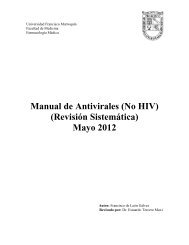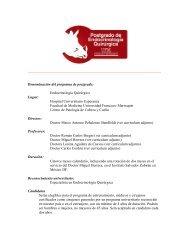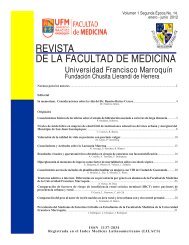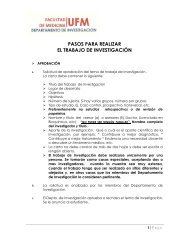Teaching That Sticks (pdf)
Teaching That Sticks (pdf)
Teaching That Sticks (pdf)
- No tags were found...
You also want an ePaper? Increase the reach of your titles
YUMPU automatically turns print PDFs into web optimized ePapers that Google loves.
SIMPLE<br />
Journalists use a model of writing called the “inverted<br />
pyramid,” which demands that the most important news<br />
be put in the first paragraph, and then, with each successive<br />
paragraph, the news value declines. One result of this<br />
is that it’s easy to cut down a news article, if you need the<br />
space: You just lop off paragraphs from the bottom, since<br />
by definition they’re the least important.<br />
The hard part about writing using inverted-pyramid<br />
style is that it forces you to prioritize. As a journalist, you’ve<br />
got scads of information at your disposal, but you’ve got<br />
to winnow it down to the few pieces of information that<br />
deserve to be featured in the first paragraph.<br />
This process of prioritization is the heart of simplicity.<br />
It’s what we call “finding the core.” Simplicity doesn’t<br />
mean dumbing down, it means choosing. Some concepts<br />
are more critical than others. And as the teacher, you’re the<br />
only one who can make that determination.<br />
Andrew Carl Singer teaches a class on digital signal<br />
processing at the University of Illinois at Urbana-Champaign.<br />
It’s a complex subject, and it’s easy to get lost in the<br />
mathematics. So he works hard to find the core of his class.<br />
He said:<br />
When a student from the University of Illinois interviews<br />
at a company and says “I took digital signal processing<br />
from Prof. Singer,” what are the 3 things that they need<br />
to know to both get the job and make the University of<br />
Illinois proud to have this graduate working in this field?<br />
By focusing on the core ideas of the course, I whittled away<br />
the extraneous details that basically served to separate the<br />
A+++ students from the A++ students, but largely fell on<br />
deaf ears on the rest of the class.<br />
Students need to understand what a mathematical<br />
model for a signal is, what happens when it is sampled,<br />
understand the concept of analog and digital frequency<br />
and how they are related, understand what happened when<br />
the digital signal is processed (in time and frequency) and<br />
what happens when this signal is then reintroduced to the<br />
analog world, through a digital-to-analog converter.<br />
This set of core ideas can be visualized in a picture,<br />
where the signals that touch the world, say a musical recording,<br />
are sampled and become a digital file, this digital<br />
file is manipulated, and then the file is played out through<br />
a D/A converter. By showing this to the class at the beginning<br />
of the term and referring back to this example, I<br />
found I could keep the class on track to the core messages<br />
I wanted them to learn. I also focused on this core message<br />
when deciding what material to keep in the course and<br />
what should be left out.<br />
So identifying your core message involves tough choices:<br />
What’s in and what’s out? Once you’ve decided what’s<br />
“in,” how do you communicate it as simply as possible?<br />
Try the following exercise for some inspiration. Here are<br />
the rules: Spend 10-15 seconds, no more, studying the<br />
letters below. Then, look away from this article, pull out a<br />
sheet of paper, and write down as many letters as you can<br />
remember. Spoiler alert: Don’t move on to the next page<br />
until you’ve finished the exercise.<br />
J FKFB INAT OUP SNA SAI RS<br />
2 <strong>Teaching</strong> that <strong>Sticks</strong>








